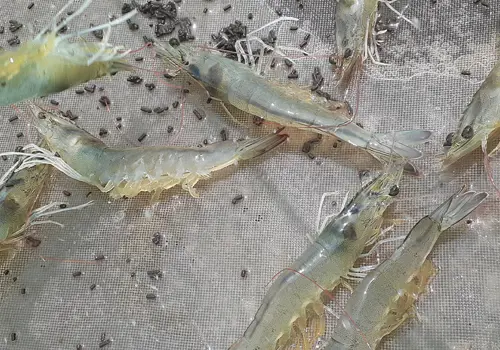
Post Larva Nursery
Mempersiapkan post larva untuk awal yang kuat di tahap nursery
Target utama dalam fase ini
Memperkuat Post Larva sebelum fase pembesaran
Pada tahap ini, PL 6-8 atau PL 10-12 dipindahkan ke nursery selama dua minggu, sebelum kemudian dipindahkan ke kolam pembesaran. Tujuan utamanya adalah menciptakan kondisi optimal untuk pertumbuhan cepat sebelum pemindahan ke kolam pembesaran, sehingga menghasilkan PL yang tangguh dengan tingkat kematian rendah setelah dipindahkan.
Kapan memindahkan PL dari fasilitas penetasan ke nursery?
Pemindahan dari fasilitas penetasan ke nursery dapat menimbulkan stres. Semakin kecil ukuran PL, semakin lemah dan berisiko tinggi mengalami kematian. Namun, PL yang lebih kecil memiliki harga yang lebih murah. Oleh karena itu, perlu keseimbangan antara kekuatan PL dan pertimbangan keputusan ekonomi. Titik optimal ukuran yang diminati biasanya pada PL 6–10. Saat melakukan pemindahan PL, pastikan proses transfer secepat dan senyaman mungkin serta periksa kualitas air, dan lakukan uji PCR jika memungkinkan sebelum pemindahan.
Memilih pakan tepat di tahap pertumbuhan yang cepat
Di fasilitas nursery, digunakan pakan komersial yang diformulasikan untuk mendukung pertumbuhan cepat dengan kualitas fisik yang sesuai. Pakan perlu tenggelam cepat dan stabil di dalam air selama minimal 30–60 menit untuk mencegah hilangnya nutrisi yang terkandung. Memilih jenis pakan dan ukuran pelet yang tepat merupakan investasi penting untuk mencapai ukuran optimal di tahap pembesaran. Pakan pada fase ini umumnya diperkaya dengan imunostimulan, bahan aktif untuk pergantian kulit, dan nutrisi pendukung kesehatan udang.
Pengelolaan kualitas air adalah kunci untuk PL yang kuat
Tahap ini sangat penting bagi kesehatan dan kelangsungan hidup PL. Pada fase ini, PL masih sangat sensitif terhadap amonia dan perubahan kondisi lingkungan. Karena itu, aerasi yang berjalan terus-menerus, menjaga suhu, pH, dan kadar amonia tetap stabil pada level rendah sangatlah penting. Pengukuran salinitas pada sistem juga tidak boleh diabaikan. Dengan padat tebar yang tinggi dan pemberian pakan yang baik, pastikan aerasi di kolam atau bak pembesaran awal (nursery) selalu mencukupi.
PERTANYAAN YANG SERING DIAJUKAN
Pertanyaan Penting di Tahap Nursery Post Larvae
Untuk mencegah penyakit, jaga kualitas air dengan pergantian air secara rutin, penggunaan probiotik, dan aerasi yang cukup. Early Mortality Syndrome (EMS) memang sulit diobati, namun pengelolaan yang tepat dapat membantu meminimalkan dampaknya. White Spot Syndrome Virus (WSSV) biasanya dipicu oleh salinitas dan suhu yang rendah, sehingga memantau dan menyesuaikan kondisi air sangat penting untuk mencegah wabah. Sebelum menebar PL ke kolam, tim teknis udang kami dapat membantu melakukan pemeriksaan beberapa penyakit pada PL menggunakan metode PCR.
Diskusi dengan ahli kami untuk analisa labPowering Progress
Optimisasi setiap fase hidup udang
Udang berkembang melalui beberapa tahap: telur menetas menjadi nauplii yang bergantung pada kuning telur sebagai sumber nutrisi. Mereka kemudian berkembang menjadi protozoea yang memakan plankton, lalu menjadi mysis yang mulai memiliki kaki renang. Pada tahap pascalarva (PL), udang menetap di dasar perairan dan mengonsumsi pakan mikro formulasi. Juvenil tumbuh melalui proses ganti kulit (molting) dan membutuhkan pakan akuakultur berprotein tinggi, sedangkan pada tahap dewasa mereka memakan pakan komersial seimbang untuk mendukung pertumbuhan dan reproduksi. Lama siklus ini bergantung pada jenis udang, target ukuran pasar, dan kondisi pertumbuhan.